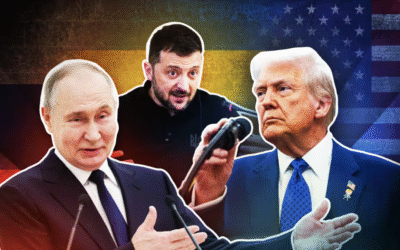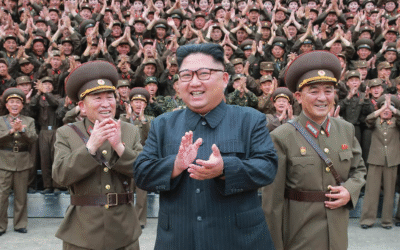In the high-stakes arena of 21st-century geopolitics, China is undergoing a strategic makeover. Gone are the days of fiery rhetoric and diplomatic aggression, dubbed “wolf warrior diplomacy,”(a term derived from a nationalist Chinese action film) characterized China’s foreign relation around 2018-2021. Today, Beijing is trading in its growl for a gentler tone one wrapped in infrastructure deals, cultural exchanges, and vaccine shipments. But make no mistake: this shift isn’t a retreat it’s a recalibration. Through calculated soft power strategies, China is silently stitching itself into the fabric of global influence, all while sidestepping the resistance its earlier assertiveness provoked. The question is no longer whether China is expanding its reach, but how effectively it’s doing so by winning hearts and minds rather than issuing threats.
With an overview on the U.S trade wars, especially the one with China, it involves the tariffs on Chinese goods to counteract what the U.S. claims are unfair trade practices, also with the restrictions on Chinese tech companies like Huawei and Tiktok being dragged into this trade war just to make them submit to the aggressive on-going diplomacy. Another is the efforts to decouple or reduce U.S reliance on Chinese supply chains, even though the U.S is aimed at protecting American industries and curbing China’s economic influence, these policies have had a global ripples effect.

China is effectively expanding its global influence by Global media and information influence. This method of Chinese global media outlets (CGTN, Xinhua) and partnership with foreign media. The goal is to shape global narratives, and present China’s rise with a peaceful influence, one of its critical strength strategies is to offer an alternative to western-dominated media making it soft power strategy both appealing and strategic.
China is expanding its soft power through cultural diplomacy and education, with promotion of Confucius Institutes, scholarships, Chinese language learning, film and art exchange to help cultivate cultural familiarity and long-term influence among the youth and intellectuals as well as strengthen a long-lasting influence and non-coercive with effectiveness in Africa, Southeast Asia, and parts of Europe.
Chine’s economic development partnership is also one of the soft power strategies implemented (esp. the Belt and Road Initiative). Including infrastructure investment, loans, and trade agreements (roads, ports, railways) in over 140 countries, their main goal is to build economic independence and goodwill, especially in the Global South, making it easy to strengthen infrastructure gaps where western institutions have been slow or absent. But with this soft power strategies, China has been accused or blamed for using theses belt and Road Initiative to lend money to the poor countries and when they can’t pay, they demand for a take over of the project and demand special favors, for example is the Sri Lanka not being able to pay their loan with the Chinese and they have to give China a control of major ports which is the (Hambantota).
China is expanding it soft power through Health Diplomacy (Mask Diplomacy and Vaccine Diplomacy) with the provision of medical supplies, vaccines (Sinopharm, Sinovac) and health expertise during the COVID-19 and their main goal is to rebrand China as a responsible global leader post-pandemic origin controversy.

Also, China’s partnering with regimes without pressure them on governance, human right, or reform to create a Non-interference Policy. The Chinese goal is to offer an alternative model to help conditional aid and political string of western, also to strengthen and attract many leaders, particularly in Africa, Central Asia, and the Middle East.
With the strategic assessment of the Chinese, some of what China gets right is a pragmatic, non- ideological approach that will aligns with the needs of many non-Western states, secondly a more discipline tone post-wolf-warrior era, especially from Xi Jinping’s new diplomatic corps. And lastly tapping into anticolonial and anti-western sentiment with a narrative of shared development.
Also, if China does not strategies well, their soft power could backfire because soft power is not something easily commanded, it must be earned. China’s state-directed efforts can feel inauthentic or manipulative, while its authoritative governance model remains a barrier to full trust and acceptance in liberal societies, in addition, economic entanglements via BRI may breed resentment over time of local populations to see no tangible benefits or face environment/social cost.
But also, China’s current soft power is deliberate, multi-layered, and a long-term, these strategies allow China to present itself as a cooperative and benevolent power, especially to developing nations that are skeptical of Western dominance. Therefore, the effectiveness of these efforts all depends on the perceptions of authenticity, mutual benefits for both countries and a cultural sensitivity, without these implementation, China’s soft power risk being seen as just a softer mask on a still ambitious global agenda.
Stay Informed, Stay Ahead
Curious about what’s really shaping the world economy—and how it affects you? Follow us on Facebook and LinkedIn for quick, clear insights into global trends, key economic shifts, and real-world analysis. Whether you’re running a business, studying economics, or just trying to stay informed, our content breaks it all down in a way that’s easy to follow and worth your time. For full stories, sharp visuals, and deeper takes, visit our LinkedIn and explore more.



